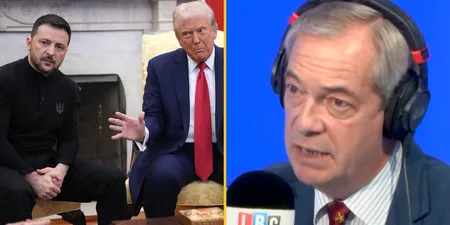The unrest that erupted after England lost the Euro’s put the spotlight not only on racism but also on drug-taking among fans. So how bad is it, and what are authorities doing about it?
Sunday had already turned to Monday by the time Rachel* spooned the final nugget of coke into her nose while sat in her living room in Oldham, Manchester.
Like 30 million other people, she’d been watching England crash out of the Euros on July 11, and like an increasing number of them, she’d done so high on cocaine.
But while she was having a Class A snort in private, some fans were far more flagrant, with videos ricocheting across social media of boozy fans doing bumps off their house keys.
One user, Charlie Perry, was even pictured with a flare shooting out of his bum, after binging on 20 cans of cider and an unknown amount of gear – one line of which he took very publicly.
THE SUN: Jackass #TomorrowsPapersToday pic.twitter.com/8rYx3Z6thC
— Neil Henderson (@hendopolis) July 14, 2021
But was it just a case of Brits getting carried away with football coming home, or representative of a wider drugs culture within the sport’s fan base?
In short: a bit of both. A survey of over 1,400 UK football fans, published in May, showed that a third had witnessed cocaine use in stadiums within the past year. And of the respondents who had done coke themselves during the same period, nearly 40 percent had used it while watching a football game.
“It’s turning up in abundance in football.”
The Kent and Oxford University-based anthropologist who conducted the study, Dr Martha Newson, told JOE that there was a “growing” trend of cocaine use amongst football fans, “partly because it keeps fans awake better than alcohol can”.
“It taps into ‘lad culture’ and perceptions of being macho too. And football often reflects trends in society, cocaine is so prevalent right now that it’s perhaps not surprising that it’s turning up in abundance in football.”
(The most recent Office for National Statistics data, states that 3.4 percent of adults aged 16 to 59 years old had taken a Class A drug in the last year – approximately 1.1 million people – in England and Wales, and that cocaine was the second most used drug, behind cannabis.)
The Met was heavily criticised for the way it policed the Euros, but they’ve insisted officers did all that they could to prevent fans from taking drugs, including using dogs as part of their operation. In the aftermath of the unrest, police chiefs have pushed for changes to Football Banning Orders – that are usually imposed by a court after someone is convicted of a football-related crime – by so they can be used to exclude fans arrested for drug offences. At present, the legislation only covers alcohol offences.
It has acc started 😭 #ItsCominHome pic.twitter.com/CakfhshShT
— MsTee❤️🔥 (@foreigntee02) July 11, 2021
A screengrab of a message posted on Instagram on the day of the Euros final highlights the relationship between major sporting events and drugs. The account, Shottatexts, makes light of the often amusing exchanges between dealers and customers.
It reads: “In honour of England reaching the Euro2020 finals we are giving away a free 3 for £100.” It then asks customers to place an initial order over £50 and guess the correct match score to win more coke.
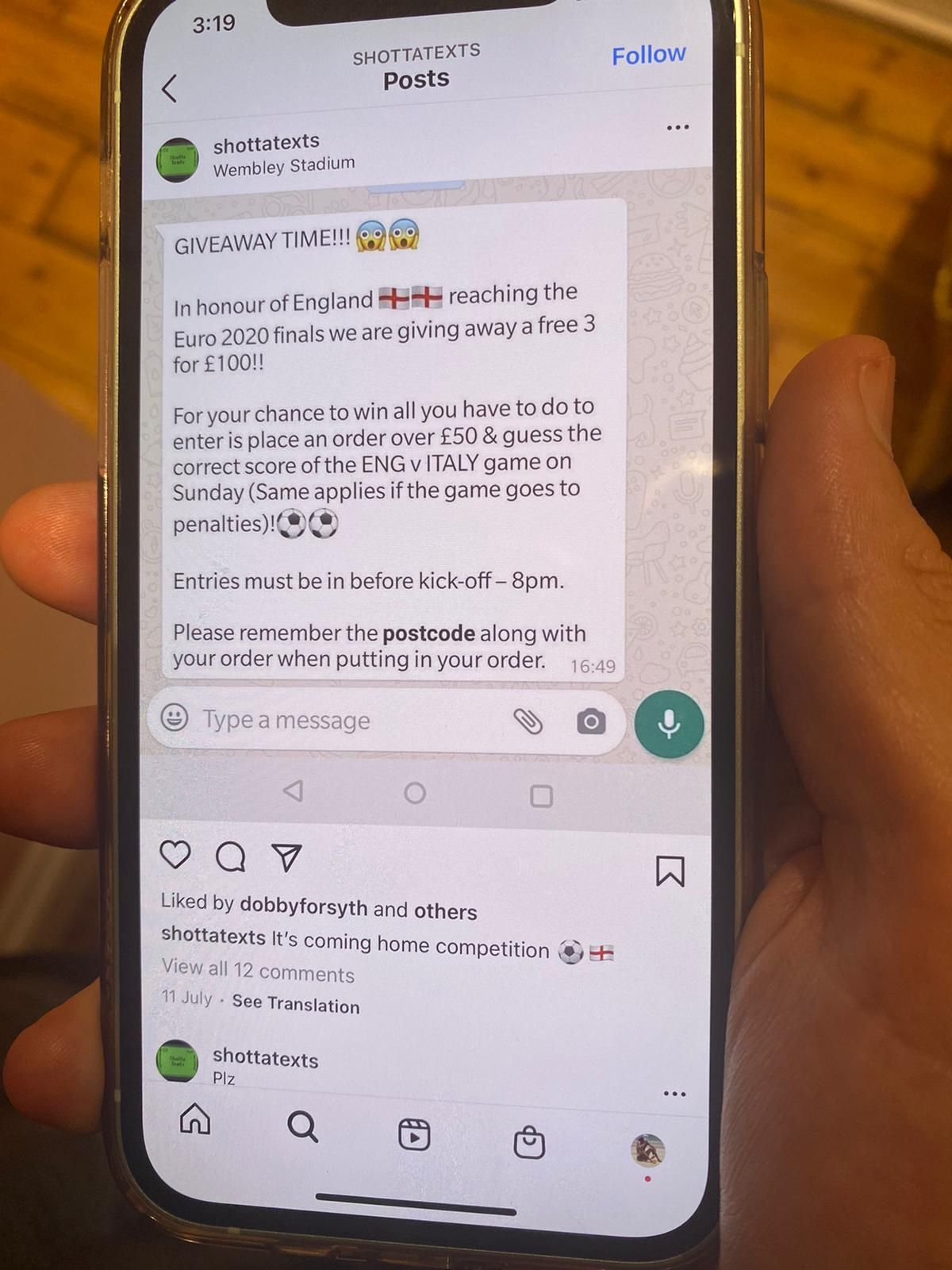
And it was further reflected in the personal experiences of those nestled among the rowdy crowd at Wembley Stadium for the final, some of whom witnessed “open” and “brazen” cocaine use just seats away from them.
“Football has a growing stag-do culture which is troubling.”
Stuart Clark, a 44-year-old England fan who paid £808 for his ticket, saw people in the seats next to him snorting coke mid-way through the game.
“These people to the left of me sat down, took some out of their pocket and snorted it. I knew it was coke as you could tell by how it was wrapped in a small bit of paper. It’s the first time I had seen scenes like this at football. People are less concerned about concealing it I think, that’s the difference.
“But it’s not something you care to see if you have paid £808. I paid that because it was a once-in-a-lifetime thing. Football has a growing stag-do culture which is troubling. It was never a nice atmosphere – the worst experience of a game I’ve ever had. Wembley was an intimidating place. Men were carrying small children to avoid the broken glass on the ground and traffic cones were flying through the air.
“It’s a British issue, because when England is involved the culture changes. I went to Italy v Spain in the semi-final and it was carnival culture, fun, laid back, no menace.”

What Stuart saw was not a one-off. Craig Humphries, 47, another attendee at the final, saw people sniffing cocaine through “little scoopy things” on the concourse, in their seats and near the toilets.
“I’ve seen people snorting in the toilets at certain away games following my club in the past,” he told JOE. “Usually though they would just be a group suddenly all coming out of a toilet cubicle clearing their nose and talking at a high volume. However, what struck me on several occasions during the Euros was the sheer brazenness of the guys doing lines.
“Sure these people have existed, but on the fringes, never like on Sunday [July 11].”
“On a really really good day without drugs I’m lucky to get 12 hours [of drinking] in, but with coke two days is reachable.”
For Dan*, a Liverpool fan and ex-user, the brazen drug use on display at the Euros came as no surprise.
He started taking drugs at 17: “I did MDMA when clubbing, then grew out of that and moved onto coke. The reason they come together so well, I’d say, is the social aspect of both. Being part of a football following gives a sense of family and inclusion and for some reason a lot of these people are also into coke.”
Dan, who is still living in Liverpool after completing a Master’s degree in Manchester, said using cocaine while watching football made him feel more connected with what was going on. “That’s why you take it for football, it makes the highs higher and the lows lower. I’ve never defaced property or broken anything but you’d always get involved in the chants, and obviously, we were loud. You’re more confident and some people get aggressive, I know that can happen from drinking but more so with coke, definitely, because you feel invincible.”
Dan also notes another important feature of a coke high: it keeps you awake. And just as Dr Newson posited, it allows users to keep drinking.
“When Liverpool won the Champions League in 2019, we were out all day and then it was back to a house party to celebrate, which included drugs, then we were up all night and into town the next day for the trophy parade, so we were going for probably 36 hours, which would be practically impossible without drugs,” Dan said.
“If I’m drinking [without coke] I’m drunk after four to six pints. But when you’ve had drugs you can do 10 pints plus the jagerbombs, then spirits in the club. I’d say on a really really good day without drugs I’m lucky to get 12 hours [of drinking] in, but with coke two days is reachable. You pay for it the next day though.”
Steve Rolles, a senior policy analyst at drug charity Transform, explains: “Cocaine and alcohol go together so well though, and so dangerously. Because the stimulant of cocaine works in opposition to the depressant of alcohol, they counteract each other, so you can carry on drinking for longer. This facilitates high levels of alcohol consumption, and this is a problem from a public health point of view and a public order perspective.”

For England fan Rachel*, the stamina cocaine offers is also a draw.
“I use coke when I watch the football either at home or at the pub. It helped to calm my nerves during the Euros and also helps me drink more. If I’m not taking coke, I reckon I’d drink six pints, but with coke… ten pints, and shots. Which is probably how much I drank during the final.”
Rachel, who works in healthcare, started pairing cocaine with football games seven years ago. “I’ll usually go out and say I’m not getting any,” she told JOE, “But after a few drinks I always end up on the phone ordering a bag.”
She added: “My partner and friends also do it, so it’s a social thing as well. They normally turn up at my house [for the football] with a few beers and a bag. I usually get a gram to myself which is £40 or £50, or me and my partner might get three for £100 and share.” Most of Rachel’s friends do cocaine when watching the football, she said.
While Rachel is still in the throes of her football and cocaine habit, Dan has given it up entirely, quitting in December 2019.
“It wasn’t fun anymore. It was getting a grip of me and becoming an addiction.”
Dan admits at the height of his usage, he was doing up to three grams on nights he was watching football. His addiction also grew as he used it to mask the grief of losing two family members, his mum, and grandad, within 15 months.
But knowing he needed to quit, and doing so, doesn’t mean Dan has stopped craving cocaine.
“I occasionally miss it because I still keep the same company and most of them do coke at least sometimes, but I don’t think it’s worth going back to where I was. I miss it most during big matches when we’re making a day (and sometimes night) of it.”
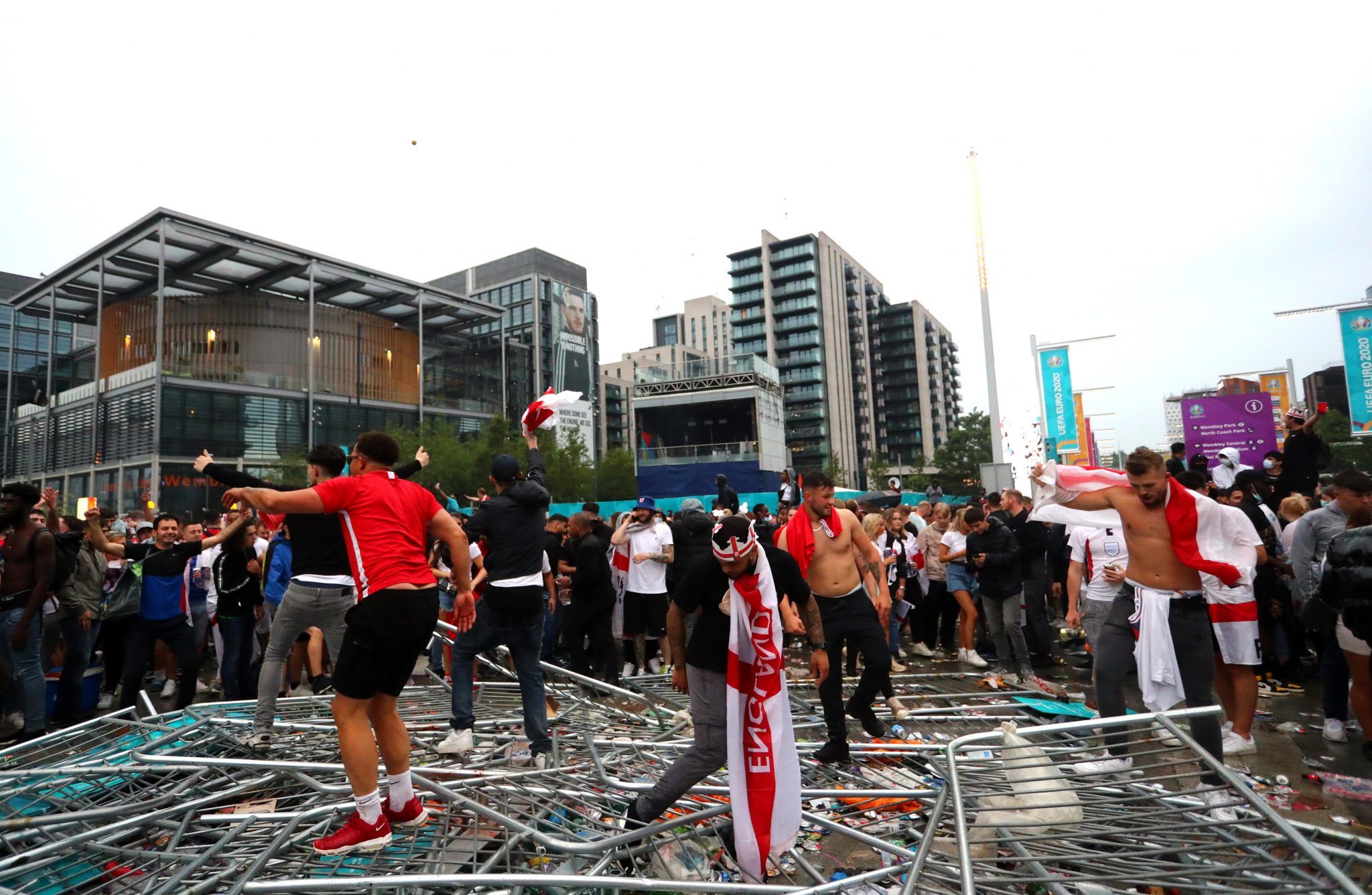
According to Rolles, price and purity of cocaine play a big part in its appeal. While prices went down, quality went up.
“Most working-class people wouldn’t be able to afford £200 a gram like in the 70s, but £50 by the turn of the century is suddenly very affordable – so a line of coke didn’t cost much more than a pint,” he explained.
“The average purity in about in 2005 had gone down to about 20 percent. People were drifting away from using it because it was basically rubbish. Now, the average potency of cocaine is over 60 percent, so from a user perspective it’s a much better drug.”
But from a public order perspective, it is most certainly not, as witnessed on that now-infamous Sunday, where scenes of roaring madness were everywhere you turned, online or in real life. Fans stormed Wembley and as the atmosphere soured after the final whistle – leading to racist abuse of England players – disorder spread to small towns across the UK.
Police arrested 51 people across London; 26 at events in Wembley, and 19 officers were injured. According to The Independent, more than 2,300 incidents were linked to the Euros, including stabbings, glassings, fights and assaults on police officers, and 630 arrests were made in England and Wales.
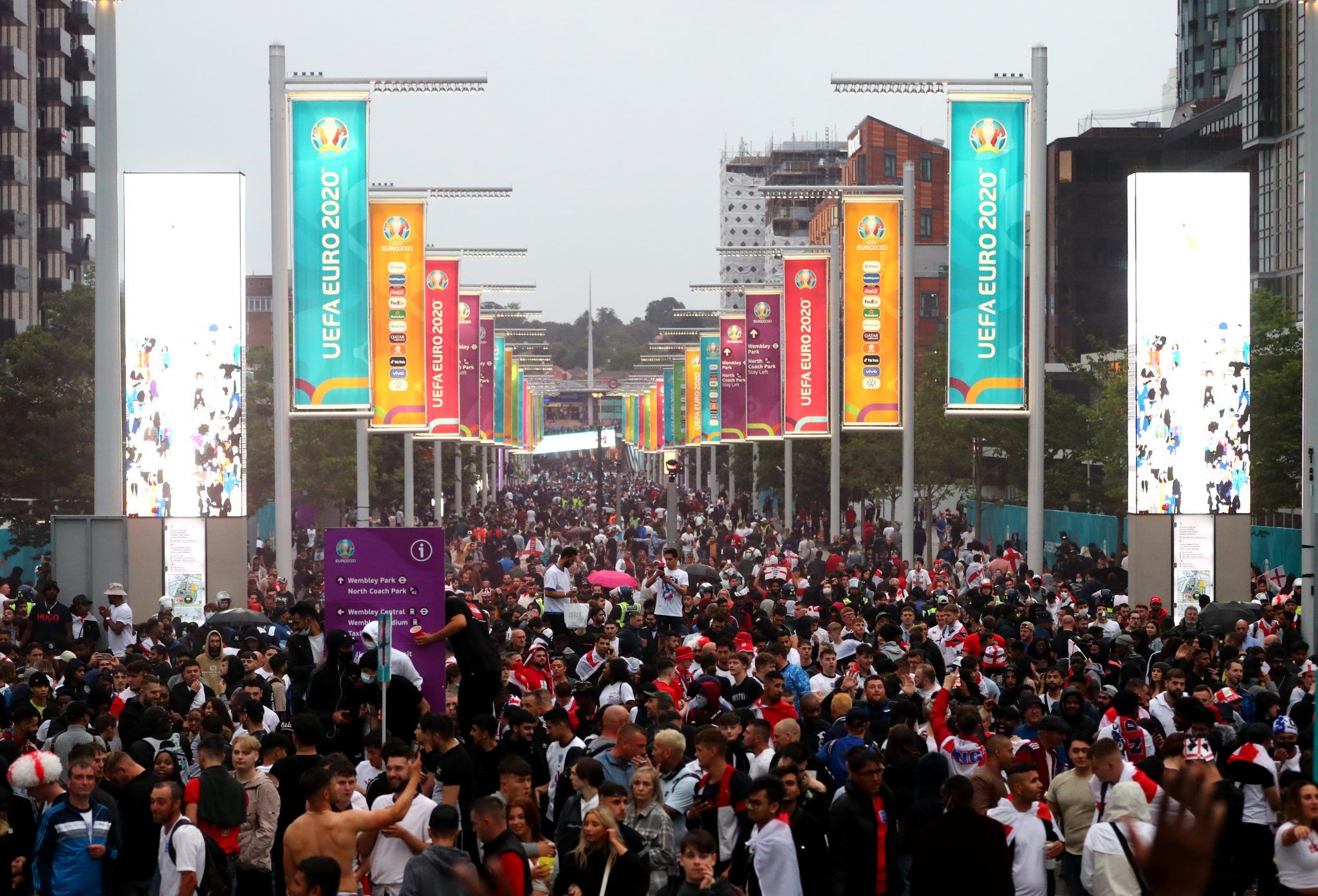
It is not known how many arrests were made for drugs, but it is clear police see them as a major problem. In the wake of the Euros, Chief Constable Mark Roberts, who is the national lead for football policing, called for Football Banning Orders to be brought “up to date” to cover drug offences. The move was backed by Labour, with shadow home secretary, Nick Thomas-Symonds telling the newspaper: “The law should be changed to keep pace with the real world – and reflect what is causing and contributing to disorder. That should include the use of all illegal drugs when it comes to Football Banning Orders.”
In the end, the final whistle has to be blown by the Home Office, and this is looking more likely than ever. A Home Office spokesperson told JOE that all football legislation, including Football Banning Orders, are under constant review, so they can be amended and made fit for purpose in the current day at any time.
So what is the Football Association doing about fans taking drugs in the stands? A spokesperson told JOE that illegal substances are prohibited at Wembley and can lead to fans being ejected.
“We are determined to fully understand what happened outside and then inside Wembley Stadium,” a spokesperson said restating its plan to conduct an independent review led by Baroness Casey of Blackstock. The baroness is a Crossbench Life peer, who works across social welfare.
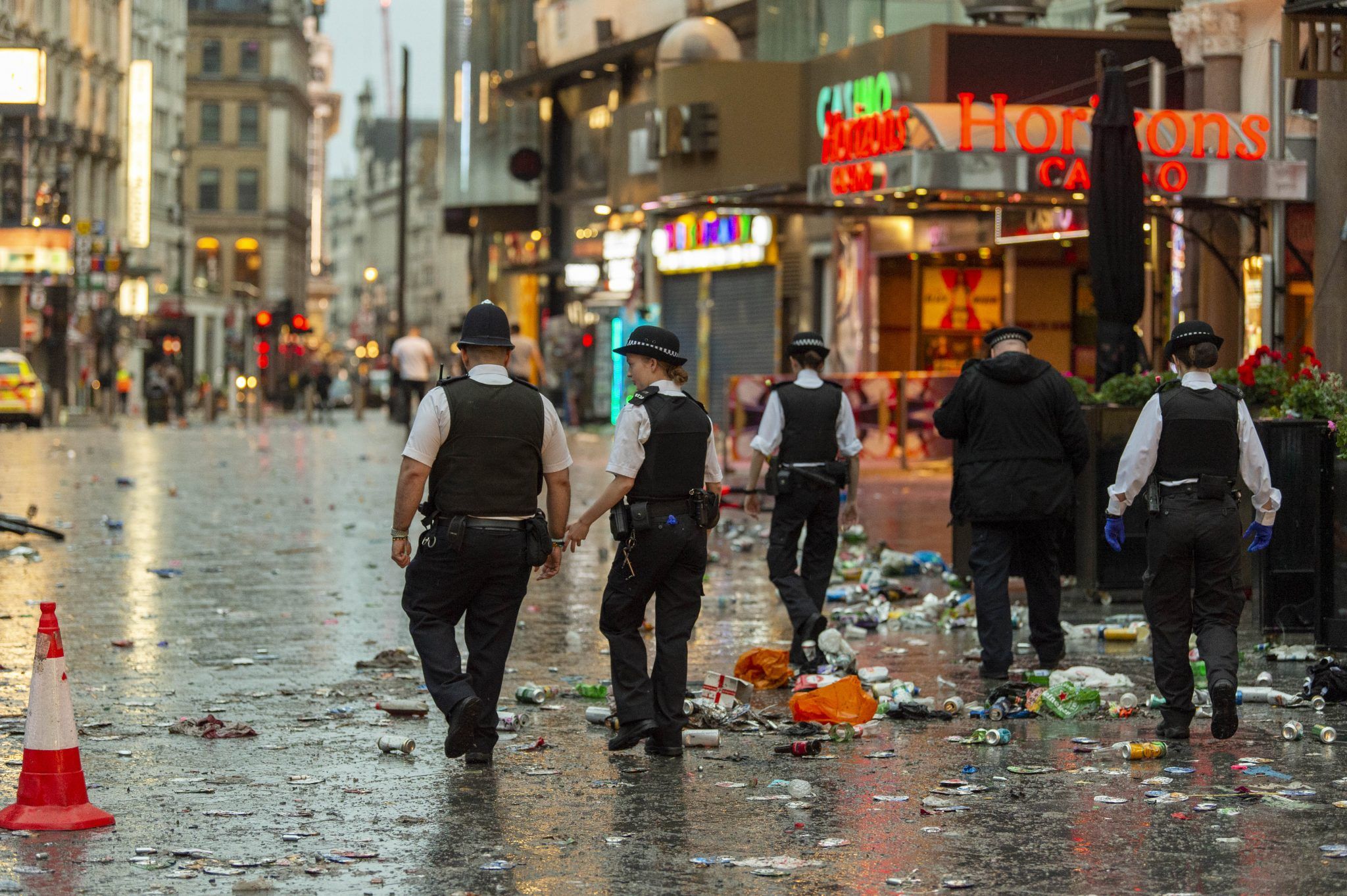
They continued: “A key emphasis of the findings will be to ensure that lessons are learned and such disgraceful scenes are never able to be repeated. We continue to work with the relevant authorities in support of their efforts to identify those responsible and hold them to account.”
While it’s highly likely, that drugs are helping fuel football hooliganism, that wasn’t always the case. In the 90s, fans favoured ecstasy. In 1994, sociologist Mark Gilman found a direct and causal link between a massive decline in football violence and “hooliganism” with the rise of MDMA use.
Sometimes you can’t tell if it’s gonna be ‘drink all your beer’ or ‘sniff all your gear’, this wasn’t one of those times https://t.co/vK0Cm62EDc
— GPryor (@Pryor__) July 11, 2021
Dr Newson, the anthropologist who did the football fans drugs study, told JOE that rave culture changed football fans behaviour because “the effects of ecstasy were potentially still in people’s systems when they came to the game the next day. MDMA simply isn’t linked to aggression, violence, or personal harm in the ways that cocaine is.”
Steve Rolles agreed, adding: “It was a different time. Even the chants were different”.
And there are no prizes for guessing which songs wouldn’t have made it onto the roster in the 90s, particularly ones which start with “Doooooon’t take me home” and have in recent years been changed so that “beer” has been substituted for “loads of gear”.
*Some names have been changed
If you or someone you know is struggling with addiction or drug-related problems, you can contact Talk To Frank’s 24-hour hotline at 0300 123 6600, Narcotics Anonymous at 0300 999 1212 or Samaritans at 116 123.
Read more:
• People take knee at vigil outside Rashford mural in Manchester
• The absolute state of Leicester Square right now
• Covid: The football fans who will not return
• Heineken will no longer appear in front of Muslim players after Pogba causes rule change





























